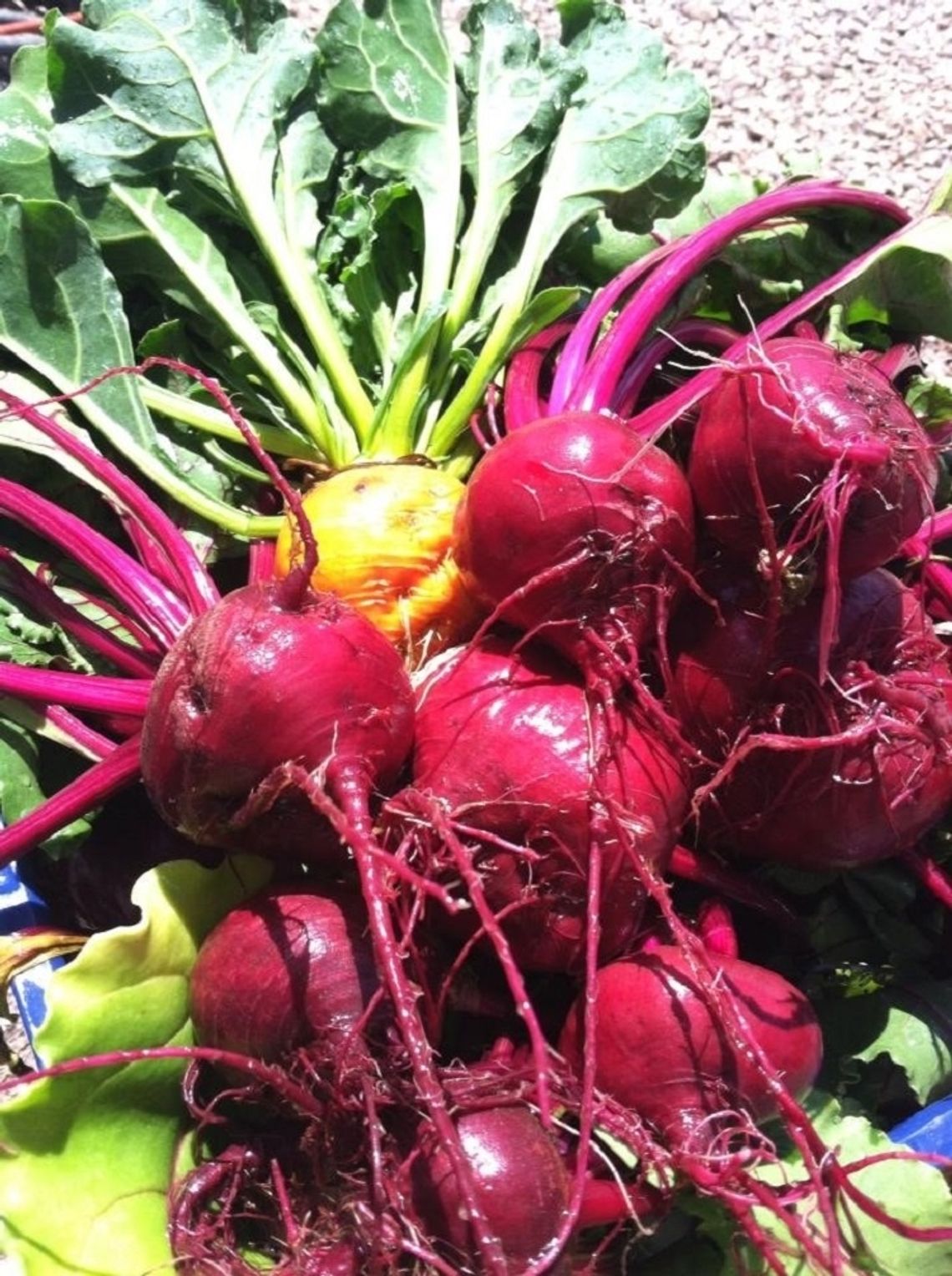I have a special relationship with beets. I find them utterly fascinating--they are audacious and colorful, fresh out of the garden they smell and taste of the earth, but when cooked their sweetness is the star of the show. The first time I contemplated beets, I was inspired by the role they play in one of my favorite books, Jitterbug Perfume written by Tom Robbins. The book is a fairy tale of sorts featuring a king and queen who manage to live virtually forever--early in the novel, they proudly declare that they are “Beet Eaters,” a quality that they believe imbues them with vim and verve. Later, beets are the secret ingredient in a perfume created to mask the musky smell that permeates the trickster Pan, as he voyages across the ocean in search of a land where people still believe in the unexplainable. Tom Robbins’ careful craftsmanship of a narrative around their magical powers was enough to inspire my fledgling love for beets--the most intense of vegetables.
It was during my time at the Slanted Porch that my baby-beet love was fed, watered, and allowed to grow. Beets were one of the crops that thrived in the parking lot hoop house at the restaurant--and beet salads became one of the most popular specials at dinner service. Something changed for me during the “beet years” at the Slanted Porch--something fundamental. There is a magic to growing your own produce, especially for a culinary professional and a lover of food. We cradled their tiny spiky seeds in our hands, babied them as they germinated in soil blocks on top of the freezer, transplanted them, watered them, weeded around their beds, and ultimately, we harvested them. Thursday afternoons were for preparations--often roasting scores of beets drizzled with olive oil, sprinkled with salt and pepper. After cooling, we would slough off their darkened skin to reveal a brilliantly bright veggie-jewel that would star in whatever iteration of a beet salad we offered that weekend.
I roasted, peeled, and waxed philosophical about beets so often that I got a beet tattoo--beets became emblematic of the beauty of slow, local, intentional food.
Beets come in many shapes and sizes. There are red beets, gold beets, orange beets, there are even striped “Chioggia” beets. Early in the season, you will often see bunches of baby beets with the greens still attached. Later in the season, beets are frequently sold without their green tops. Whatever the size, shape, or color of your beet, it can be prepared the same way.
Here is how I prepare a beet:
- Thoroughly scrub the beet and trim off the greens if still attached and USE THEM. I typically also trim the long taproot at the base of the beet.
- Place your washed beets into a roasting dish. If you have beets of different colors, you will want to keep them sorted otherwise the red beets will turn your other beets red in places. Drizzle with olive oil and season generously with salt and pepper.
- Add a little bit of water into the bottom of the roasting pan. Cover tightly with a lid or foil and roast at anywhere from 350-400 degrees until your beets are done.
- You can tell a beet is done when a knife easily pieces and slides cleanly through to the center of the beet. Much like a potato.
- Let your beets cool until you can comfortably handle them. Gently rub away the skin of the beet under a stream of running water. PRO-TIP - wear gloves if your beets are red otherwise you will spend the rest of the afternoon explaining to people why your hands are bright red.
There are so many recipes that you can make once you have roasted your beets. Here is one of my favorites:
Kelli’s Favorite Beet Salad
INGREDIENTS:
1 bunch of beets, roasted
2 navel oranges
1 bunch of mint, chopped
4-6 oz of honey goat cheese
1 T Dijon mustard
1 T honey
¼ c orange juice
¾ c salad oil (olive, grapeseed, avocado, a combination)
Salt and pepper to taste
DIRECTIONS:
- Cut the top and bottom off of the oranges then remove the peel. Working carefully, hold the orange in your non-dominant hand and cut out segments separating the fruit from the pith and connective membranes. Make sure you work over a bowl, so you collect any juice that drips. Squeeze the juice out of the pithy remnants after all the segments have been removed and discard.
- Cut beets into wedges and put in a bowl with orange segments, chopped mint, and crumbled goat cheese.
- In a small bowl, combine orange juice, Dijon mustard, and honey together until well mixed. While whisking constantly (or using an immersion blender), slowly drizzle in oil until your dressing is thickened and creamy. Season to taste with salt and pepper.
- Dress your beet salad and enjoy!









































Comment
Comments